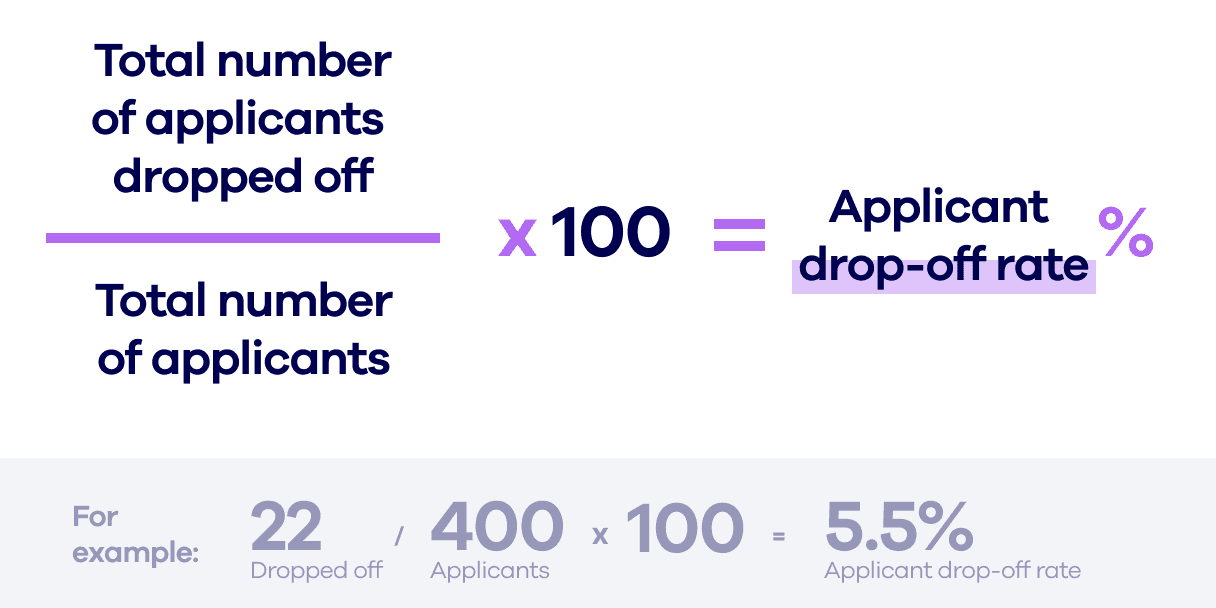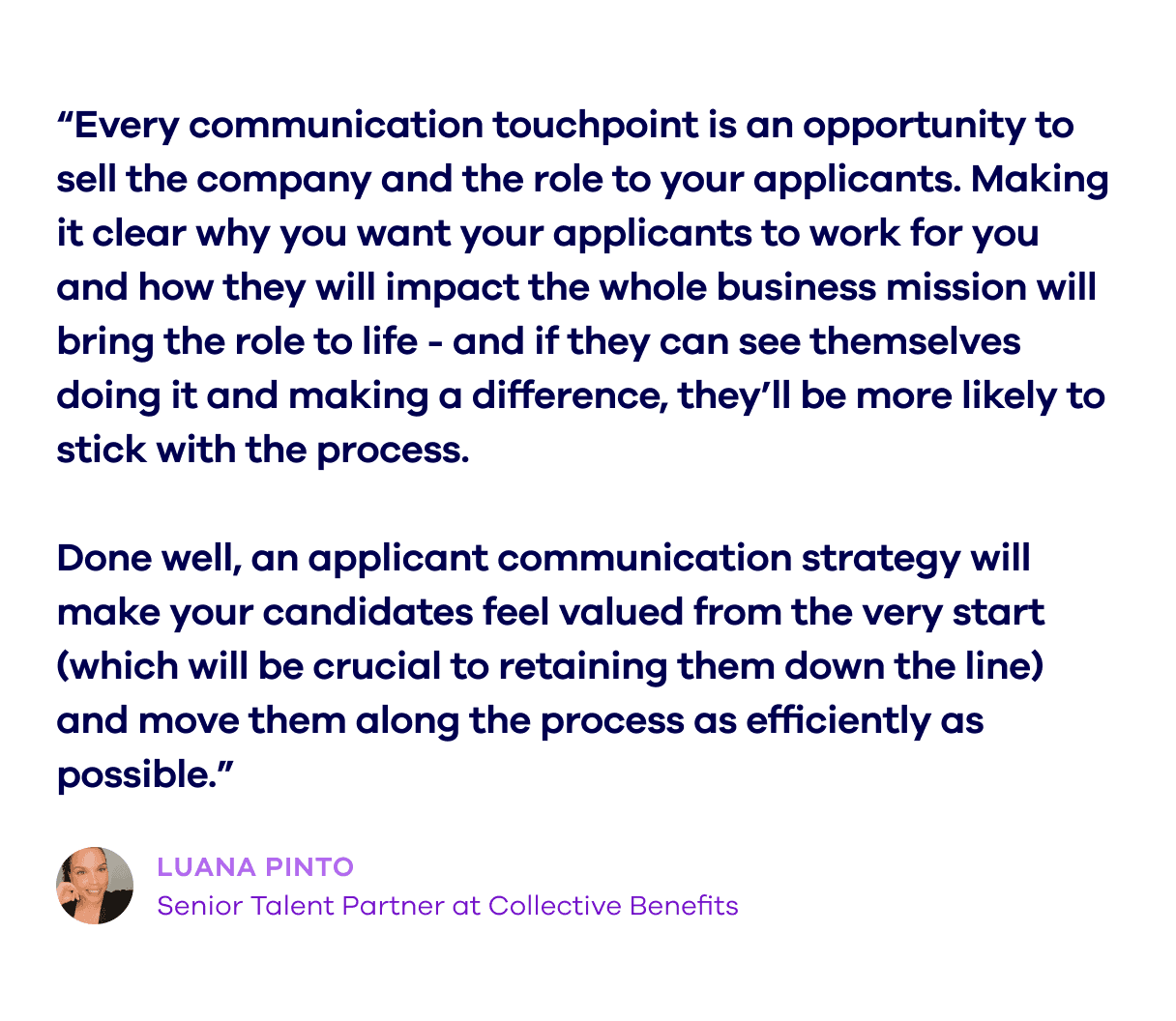Things have changed around here
We've rebranded from Collective Benefits to Onsi. This content is from before our rebrand so you may see mention of our old name.
Recruitment has always been a competitive field but the nature of the on-demand industry has taken this to whole new heights. As a business that relies on flexible workers, it’s probably going to be one of the biggest challenges you face.
Check out our free worker communications template below – for effective comms that reduce applicant drop-off rates 🙌👇
How to calculate your applicant drop-off rate
Because it’s so easy for flexible workers to apply for lots of jobs at once, as a business, you’re competing from the get-go. Essentially – it’s all too easy for applicants to drop off before they’ve even begun the on-boarding process.
Want to find out where in the process your applicants are dropping off? We’ve got you:

How to improve your applicant drop-off rate
Now you know what you’re measuring yourself against, and where you need to improve, here’s a key way to improve it: communication (really, really good communication). Read on to find out how to beat the competition by retaining great applicants:
Find out how to communicate in a way that reduces drop-offs between applicants applying and starting training
See for yourself: check out how one company got a 65% in flexible worker applications
Why is your applicant comms strategy so important?
The application process for flexible workers is way more fast-paced and also less committal than for those doing traditional job applications.
So it’s crucial to communicate in a way that keeps up with the pace, doesn’t cause confusion, and also sells your business as a great place to work at every opportunity.
Our very own Senior Talent Partner, Lu explains:

How should I be communicating?
To reduce applicant drop-off rates, you should be communicating:
Across multiple channels – like email and text
Never just rely on one method of communication. To reach all applicants, you should use a minimum of email and text. You can preschedule messages and emails using tools and platforms like:
Setting up WhatsApp groups and using social media messenger services can help you reach even more applicants.
In accessible language – every step and CTA should be clear
Remember you’re communicating with a wide demographic of people. Many might not have English as their first language.
So it’s essential to make communication as easy to understand as possible. Use clear, simple language and avoid colloquialisms to give your messaging the best chance at resonating.
Keep sentences short, too. Like this 👈.
In a two-way conversation – make sure applicants can get in touch
Applicants should be able to ask questions and know they’ll get a prompt response.
If you have the resources, it’s great to have actual people available to speak to your applicants on the phone. To streamline the process even more, try including a Calendly link in written communications so they can easily set up an appointment to chat.
If you don’t have the resources to take calls, make sure emails and/or chat and SMS messages are answered regularly.
Speaking directly with applicants is a really nice personal touch that can encourage them to finish training. Plus it gives you the chance to learn more about what they want and need from your company. Win win.
With clarity – shout loud about the benefits of working with your company
If you have a great worker offering, make sure applicants know about this as soon as possible.
Pay for training once the worker is onboarded? Let them know straight away!
There are also other nice incentives you can offer, like giving out free coffees to those who finish training (Check out Huggg – a really nice team gifting tool).
It’s so important to make sure applicants know exactly what they can expect to gain from working with your company. Otherwise you might end up getting lost in a sea of other job applications.
What should I say?
We’ve got you covered!
We’ve put together a template with three emails and three texts to choose from, specially designed by our own Worker Communications Expert, Elysha.
Elysha has a deep understanding of how to talk to workers to keep them interested and loyal. Learn from the best with our template! 👉 click here (and don't worry, we won't ask for your email or anything!).
Reducing applicant drop-off rates in the gig economy: final thoughts
Communication is one of, if not the most powerful tool in any company’s box when it comes to worker attraction and retention.
Yet it often goes overlooked, leading to confused, impatient applicants whose heads are easily turned.
The takeaway? Put efforts into sending out regular, clear, accessible comms at the start, and you’ll reap the rewards of a full, thriving workforce long into the future. As learned by care-tech platform, Elder, who saw a 65% increase in flexible worker applications with six months of introducing their new carer loyalty programme 👋.
Want more tips on attracting flexible workers? Why don’t you check out this blog post - full of tips from our CRO Kimberly Hurd, and specialists from Fountain and Sterling.



